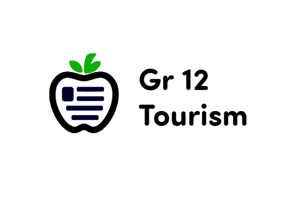Podcast
Questions and Answers
Design Hourly Volume (DHV) is typically greater than the peak hour traffic volume.
Design Hourly Volume (DHV) is typically greater than the peak hour traffic volume.
False (B)
About 80% of road accidents are caused by environmental factors.
About 80% of road accidents are caused by environmental factors.
False (B)
Traffic volume exhibits seasonal variation, such as differences noted during summer compared to school sessions.
Traffic volume exhibits seasonal variation, such as differences noted during summer compared to school sessions.
True (A)
Human error in driving accounts for a significant portion of road accidents, primarily due to speeding and reckless driving.
Human error in driving accounts for a significant portion of road accidents, primarily due to speeding and reckless driving.
The Design Hourly Volume (DHV) is generally estimated to be around 25% of the Average Annual Daily Traffic (AADT).
The Design Hourly Volume (DHV) is generally estimated to be around 25% of the Average Annual Daily Traffic (AADT).
The road transportation sector is the least important mode of inland transportation worldwide.
The road transportation sector is the least important mode of inland transportation worldwide.
Freeways have all intersections designed as free ones through bridges and tunnels.
Freeways have all intersections designed as free ones through bridges and tunnels.
Toll roads are also known as toll free roads.
Toll roads are also known as toll free roads.
Local roads provide connections mainly between major cities and are always paved.
Local roads provide connections mainly between major cities and are always paved.
Traffic volume is a key factor in determining the width of the road's cross section.
Traffic volume is a key factor in determining the width of the road's cross section.
Annual Average Daily Traffic (AADT) accounts for peak and off-peak traffic periods.
Annual Average Daily Traffic (AADT) accounts for peak and off-peak traffic periods.
Expressways are mainly designed for urban traffic with many level intersections.
Expressways are mainly designed for urban traffic with many level intersections.
Road traffic volume refers to the number of vehicles passing through a road cross section only during peak hours.
Road traffic volume refers to the number of vehicles passing through a road cross section only during peak hours.
Flashcards
Design Hourly Volume (DHV)
Design Hourly Volume (DHV)
The estimated traffic volume used for road design, representing a volume higher than off-peak hours but lower than the peak hour.
Hourly Variation
Hourly Variation
Fluctuations in traffic volume throughout the day, resulting in peak and off-peak hours.
Road Network
Road Network
The interconnected system of roads and highways, including intersections, curves, and signage.
Human Error
Human Error
Signup and view all the flashcards
What causes Road Accidents?
What causes Road Accidents?
Signup and view all the flashcards
Road Network Importance
Road Network Importance
Signup and view all the flashcards
Road Maintenance Importance
Road Maintenance Importance
Signup and view all the flashcards
Expressways
Expressways
Signup and view all the flashcards
Freeways
Freeways
Signup and view all the flashcards
Toll Roads
Toll Roads
Signup and view all the flashcards
Main Roads
Main Roads
Signup and view all the flashcards
Local Roads
Local Roads
Signup and view all the flashcards
Road Traffic Volume
Road Traffic Volume
Signup and view all the flashcards
Study Notes
Road Transportation Overview
- Road transportation is the most prevalent inland mode globally, connecting all areas.
- Other transport networks (rail, waterways) often rely on road networks for complete journeys.
- Maintaining and improving road infrastructure is crucial for a functional state.
Road Types
- Expressways: Divided, paved roads for through traffic; mostly connecting governorates; often free intersections (e.g., Cairo/Alexandria agricultural road).
- Freeways: Expressways with free intersections via bridges and tunnels (e.g., Cairo/Alexandria desert road).
- Toll roads: Toll freeways (e.g., Cairo/Alexandria desert road to Cairo/Ismailia road).
- Main roads: Paved roads linking major cities, mostly with level intersections (e.g., Tanta/El Mahala road).
- Local roads: Paved or unpaved; connecting cities and villages.
Traffic Volume and Design
- Road width (carriageway) is crucial for smooth vehicle flow.
- Carriageways are segmented into lanes of equal width.
- Traffic Volume: Number of vehicles passing a cross-section per hour, in both directions.
- Annual Average Daily Traffic (AADT): Yearly total traffic divided by the number of days; used for design, not peak/off-peak traffic.
- Design Hourly Volume (DHV): Represents traffic during the peak hour, typically 12-15% of AADT.
- Traffic volume varies seasonally, daily, and hourly (peak/off-peak).
Accident Causes and Reduction
-
Human error (80%): Speeding, reckless driving, wrong overtaking.
-
Road network/environment (10%): Geometric issues (curves, crossings, U-turns), insufficient signage, poor surface condition, encroachment, weather (rain, darkness).
-
Vehicle condition (10%): Tire failure, brake issues, vehicle age.
-
Reducing accidents:
- Engineering: Addressing road network issues.
- Education: Improving driver awareness.
- Enforcement: Implementing traffic laws/regulations.
- Environment: Considering weather, lighting, and road encroachment.
Technical State of Vehicles
- Tire explosion
- Low brake efficiency
- Vehicle age
Road Network-Related
- Geometric state: Horizontal and vertical curves, crossings, U-turns.
- Signs: Inadequate warning, guidance, information, and landmarks.
- Surface conditions: Poor surface quality.
Environmental Factors
- Right of way encroachment
- Weather (rain, darkness)
Studying That Suits You
Use AI to generate personalized quizzes and flashcards to suit your learning preferences.




